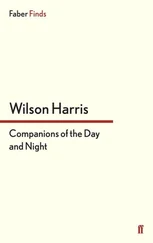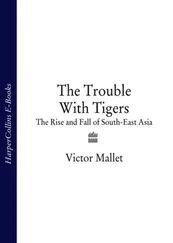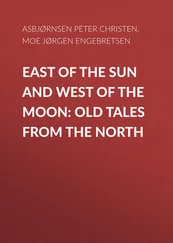An early Syriac document for which it has proved especially difficult to find a precise historical context is the Letter of Mara bar Serapion (text and English translation in Cureton 1855; see now the contributions in Merz and Tieleman 2012). It is unclear whether or not a Greek original underlies this Syriac text, and hypotheses of chronology have also varied considerably, ranging from the second to the fourth centuries CE. The text takes the form of a letter by a self-styled philosopher to his son and offers pieces of moral advice perhaps inspired by Stoic ethics. Especially problematic is the reference that the text makes to the Romans’ occupation of Samosata, and to the ensuing exile of the author; this passage might be a reference to the Roman takeover of Commagene in the early 70s CE. Some scholars, however, emphasizing the overall lack of historical detail in the text, have argued that its moral contents and format suggest instead strong links with higher rhetorical education and, in particular, with the school exercise of the chreia elaboration (McVey 1990; Millar 1993: 460–462; Chin 2006). In fact, the text contains references and anecdotes about Greek historical figures such as Achilles, Socrates, and Pythagoras, and does indeed attest to the endurance of Greek paideia (“education”) in Syriac. The Letter of Mara bar Serapion should be understood within the context of the large strand of early Syriac instructional literature that demonstrates the continuity of Greco-Roman educational traditions in Syriac, such as the translations of works by Plutarch, Lucian, and Themistius, and wisdom literature attributed to ancient Greek philosophers (Brock 2003; Rigolio 2013; Arzhanov 2019).
Unlike much of the later Syriac literature, the Christian character of these instructional texts is rather lukewarm, and they stand as a reminder of the diversity that characterized early Syriac literature; it is necessary to emphasize that what survives was selected and transmitted according to the interests of Syriac Christianity as it became institutionalized from the fourth century onwards. A trace of another strand of literature that circulated in Syriac from the second century onwards, and was not obviously related to the religious interests of the Christian communities in Osrhoene, is the Story of Ahiqar , a long-lived piece of ancient Aramaic literature that was received into Syriac and here considerably expanded. Arguably, this text catered to the intellectual interests of the class of scribes, administrators, and diplomats of the kingdom of Edessa. It is a fictional narrative centered on the legendary career of Aḥīqar, an Aramaean minister working at the court of the Neo-Assyrian kings Sennacherib (705–681 BCE) and Esarhaddon (681–669 BCE), who, although long distinguished for his wisdom and royal service, was slandered by his own adoptive son and apprentice Nādin and consequently sentenced to death. The Story of Ahiqar stands as an important reminder of the potential connections between Syriac and ancient Aramaic literature; in its expanded Syriac version, however, it includes much moralizing and instructional material that reveals a strong interest on the part of the Syriac-speaking elites in moral education and etiquette (English translation in Lindenberger 1985; Contini and Grottanelli 2005).
Greco-Roman themes did not disappear from the Syriac literature of the following centuries; here, they often intersected the patterns in which Syriac speakers wrote and re-wrote their own past (Wood 2010, 2012). In the aftermath of Emperor Julian’s defeat in 363 CE, Ephrem the Syrian composed four hymns ( madrashe ) Against Julian ; they describe, in condemnatory terms, the reign of Julian and the Roman surrender of Nisibis (Ephrem’s own homeland) as part of the peace deal with the Sasanians; as a result of this event Ephrem emigrated to Edessa, which remained under Roman control. The hymns are often described as vivid invectives written by somebody who had direct experience of the events narrated and contain important historical information (for instance on Julian’s bull coinage). Perhaps paradoxically, however, in these hymns Ephrem presents Nisibis as a bulwark of paganism, a city that, under Julian’s government, opted to set up idolatrous cults within its walls; in Ephrem’s view, the eventual surrender of Nisibis to the Sasanians was just retribution for its own paganism (Griffith 1987). Another especially notable text dealing with Julian, and known as the Julian Romance , is a composite narrative about the reigns of Emperors Julian (361–363) and Jovian (363–364) that strongly condemns Julian and his persecution of Christians. The Julian Romance was likely redacted in early sixth-century Edessa, whose cultural and religious concerns it reflects; it shares some of the aims of the Teaching of Addai in presenting Edessa as an orthodox stronghold standing in stark contrast to the cities of Harran, Antioch, and Constantinople. The pagan emperor Julian is depicted as an enemy to Christianity, aligned with his Jewish allies, and characterized as the Chalcedonian Justinian in Constantinople (Wood 2010); themes found in the Julian Romance emerged again in later Syriac literature, including an important strand of apocalyptic literature represented by the late seventh-century Ps.-Methodius (Butts 2011a).
The homily On the Fall of the Idols , by Jacob of Serugh (d. 521), takes a different stance and denounces some specific (if ancient) cultic connections of Edessa with Nebo and Bel, in addition to condemning the paganism of Harran, and ultimately raising questions about the longevity of these cults in the region (Syriac text and French translation in Martin 1875; Schwartz 2016; Healey 2019). In his five metrical homilies On the Spectacles of the Theatre the same author instead points the finger at theater and its dances as an enduring bastion of ancient paganism and raises a question about the continuity of these practices (text and English translation in Moss 1935; Hall and Wyles 2008: 412–419). Syriac martyr acts have also been used in the study of the early history of Edessa, such as the Martyrdom of Shmona and Gurya , which makes reference to the worship of the Sun in Edessa (Syriac text and English translation in Burkitt 1913; Healey 2019: 58), the Martyrdom of Ḥabbib (in Millar 1993: 486–487; Burkitt 1913), the Martyrdom of Sharbil and Barsamya (Cureton 1864; Millar 1993: 486–487), and the Syriac Martyrdom of the Mimes , which implies a degree of familiarity with pantomime among Syriac speakers (Horn 2011). Later in the sixth century, the Syriac historian and bishop John of Ephesus (d. 586) claimed to have converted as many as 80,000 pagans to Christianity in the mountains of Lydia and Caria, although it remains difficult to corroborate his claim (Ashbrook Harvey 1990: 99 with n.22–23). 1
Excellent introductions to Syriac studies are Briquel Chatonnet and Debié 2017 and King 2019; see also Healey 2019 on the religions of Syriac speakers before Christianity. Fundamental reading for research on early Syriac epigraphy and papyrology are Drijvers and Healey 1999 and Healey 2017, which deal with Old Syriac stone inscriptions, inscribed mosaics, documentary material, and coins; while Gardner 1996–2007 and Pedersen and Larsen 2013 are crucial for the Manichaean material. Debié 2015 is fundamental for historiography, together with Brock 1979. Millar 1993: 472–481 and Sommer 2018: 227–271 offer excellent introductions to the history of the kingdom of Osrhoene; while Ross 2001 and Segal 1970 are monographs entirely dedicated to Edessa. For early Syriac literature, see Brock 1997, 2004; Witakowski 2017, and the relevant chapters in King 2019. An important source when working with Syriac texts is the online portal syri.ac, which includes a comprehensive annotated bibliography of open-access resources (inclusive of references to editions and translations) related to Syriac studies; and Brock et al. 2011 is an excellent encyclopedic dictionary for Syriac studies, now also available online at gedsh.bethmardutho.org. A comprehensive bibliography of publications on Syriac Christianity is available at http://www.csc.org.il/db/db.aspx?db=SB; and syriaca.orgis a growing collection of digital resources for Syriac studies, including a geographical reference tool, a biographical dictionary, a new handbook of Syriac literature, and a database of hagiographical texts.
Читать дальше












